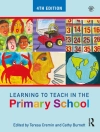Packed with new topics that reflect today’s challenges, the
Sixth Edition of the bestselling
How to Conduct Surveys guides readers through the process of developing their own rigorous surveys and evaluating the credibility and transparency of surveys created by others. Offering practical, step-by-step advice and written in the same clear and accessible style as author Arlene Fink’s other works, the book focuses on choosing the appropriate type of survey, writing survey questions and responses, formatting the survey, deciding on the characteristics and numbers of respondents to include, choosing how often to survey respondents, and analyzing and reporting the results.
Table des matières
Preface
About the Author
Chapter 1: Conducting Surveys: Everyone Is Doing It
What Is a Survey?
When Is a Survey Best?
Self-Administered Questionnaires and Interviews: The Heart of the Matter
The Friendly Competition
A Survey Continuum: From Specific to General Use
Ethics, Privacy, and Confidentiality
Children and Survey Ethics
International Surveys
Formal Standards for Ethical Surveys
Chapter 2: The Survey Form: Questions, Scales, and Appearance
The Content Is the Message
Define the Terms
Select Your Information Needs or Hypotheses
Make Sure You Can Get the Information
Do Not Ask for Information Unless You Can Act on It
Writing Questions
Organizing Responses to Open-Ended Survey Items: Do You Get Any Satisfaction?
Rules for Writing Closed Survey Questions
Responses for Closed Questions
Rating Scales
Children and Surveys
Online Surveys
Plain and Simple Survey Questions and Responses
Scaling
Chapter 3: Getting It Together: Some Practical Concerns
Length Counts
Getting the Survey in Order
Questionnaire Format: Aesthetics and Other Concerns
Branching Questions, or the Infamous “Skip” Pattern
Administration: Who Gives What to Whom?
Reliability and Validity: The Quality of Your Survey
Selecting and Adapting Surveys
Finding Surveys on the Web
The Survey Is Put on Trial: Guidelines for Pilot Testing
A Far-Reaching World: Surveys, Language, and Culture
Chapter 4: Sampling
Sample Size and Response Rate: Who and How Many?
Random Sampling Methods
Stratified Random Sampling
Simple Random Cluster Sampling
Systematic Sampling
Convenience Samples
Other Convenience Sampling Methods
Finding the Sample: Who Is In? Who Is Out?
How Large Should Your Sample Be?
Statistical Methods: Sampling for Two Groups and an Intervention
Response Rate
Weighting
Margin of Error and Confidence Level
Chapter 5: Survey Design: Environmental Control
Which Designs Are Available?
Cross-Sectional Survey Designs
Longitudinal Surveys
Experimental Survey Designs
Other Survey Designs: Normative and Case Control
Case Control Design
Survey Design Validity
Surveys, Research Design, and Internal and External Validity
Surveys With Qualitative Data: Threats to Internal and External Validity
Chapter 6: Analyzing and Organizing Data From Surveys
What Is Typical Anyway? Some Commonly Used Methods for Analyzing Survey Data
Surveying Differences: Usual Methods
To Be or Not to Be: Statistician or Qualitative Analyst?
Content Analysis, Open-Ended Responses, and Comments
Putting the Cart in Front of the Horse: Selecting Analysis Methods
Data Management
Chapter 7: Presenting the Survey Results
Reproducing the Questionnaire
Using Tables
Drawing Pie Diagrams
Using Bar Graphs
Using Line Graphs
Drawing Diagrams or Pictures
Writing the Results of a Survey
Survey Reporting Checklists and Guides
The Oral Presentation
Slide Presentations
Oral versus Written Reports: A Difference in Conversation
Index
A propos de l’auteur
Arlene Fink (Ph D) is Professor of Medicine and Public Health at the University of California, Los Angeles, and president of the Langley Research Institute. Her main interests include evaluation and survey research and the conduct of research literature reviews as well as the evaluation of their quality. Dr. Fink has conducted scores of evaluation studies in public health, medicine, and education. She is on the faculty of UCLA’s Robert Wood Johnson Clinical Scholars Program and is a scientific and evaluation advisor to UCLA’s Gambling Studies and IMPACT (Improving Access, Counseling & Treatment for Californians with Prostate Cancer) programs. She consults nationally and internationally for agencies such as L’institut de Promotion del la Prévention Secondaire en Addictologie (IPPSA) in Paris, France, and Peninsula Health in Victoria, Australia. Professor Fink has taught and lectured extensively all over the world and is the author of more than 130 peer-reviewed articles and 15 textbooks.












